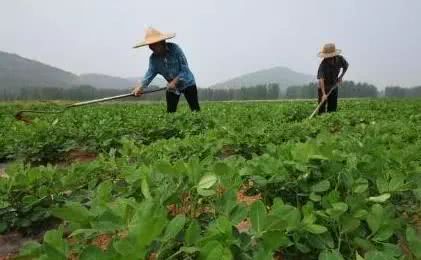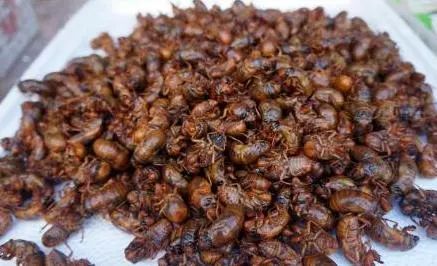Peanuts are easy to produce high yield, field management is good and yield of 800 jin per mu is very promising.

Peanuts have always been relatively high-yielding crops, and generally there will be differences in the yield of different plots, but it is very promising to achieve a yield of 800 jin per mu. Of course, this is inseparable from reasonable planting management. Here I would like to share with you some technical problems about the high yield of peanuts.
1. Land
Peanuts are not very strict with the soil, but the most suitable soil for peanut growth is loose, fertile, slightly acidic sandy soil. Alkaline soil is not very beneficial to the growth of peanuts. High calcium content in the soil is more conducive to the growth of peanuts.
Secondly, peanut is not tolerant to continuous cropping, which can easily lead to soil-borne diseases, such as root rot, stem rot and other serious diseases, which affect the yield of peanut. And many peanut underground pests will be further aggravated in the process of peanut continuous cropping. Therefore, it should be noted that after the last crop of peanut planting, the peanut field should be cleaned and ploughed deeply to reduce the occurrence of diseases. For the land with less disease, it can be cropped once a year, and seriously once every two years.
2. Variety
Peanut variety is also a major factor affecting peanut yield, so it is necessary to do a good job in seed selection. There are still many peanut varieties with high yield in the market at present, but when choosing and purchasing peanut varieties, we must choose suitable varieties according to local conditions, and of course, we should also go to the regular seed station to buy seeds, not to be cheap.
Several high-yielding peanut varieties, such as Huayu 33, Yuanza 9847, Jihua 4, Zhonghua 16 and Yueyou 7, are recommended here, but they should also be planted according to local conditions. For example, Yuanza 9847 is more suitable for planting in the north of Huaihe River, while Zhonghua 16 is suitable for planting in Sichuan, Anhui and other places.
In addition to seed selection, another step for high yield of peanuts is peanut seed coating, that is, seed dressing before planting. Peanut coating can reduce the infestation of underground pests in the process of planting, effectively reduce the occurrence of soil-borne diseases in the case of dead seedlings and lack of seedlings. And peanut coating increases peanut yield.
Peanut seed coating generally chooses imidacloprid series or chlorpyrifos series for seed dressing.
3. Planting
Planting should generally ensure the emergence of peanuts and reduce the phenomenon of seedling shortage. Reasonable close planting, generally sowing peanuts per mu of about 10,000 holes, each hole put two peanut seeds. In the peanut seedling stage, we should pay attention to clear trees, peel off the soil around the peanut seedlings and let the two cotyledons receive light. Help to increase the yield of peanuts.
4. Fertilization
Peanut should apply sufficient base fertilizer before planting, and the nitrogen fixation effect of peanut in the early stage is relatively weak, so it depends on base fertilizer. Generally speaking, after the needle has been given in the middle and later stage of peanut growth, do not fertilize it.
The above comes from promoting agriculture through science.
- Prev

Many people like to eat golden cicadas in summer, but some people say golden cicadas have parasites.
I was also surprised to see this problem. I am also from the countryside. When I was a child, my favorite thing to do in summer was to catch "crawling grasshoppers" with my friends. "climbing grasshoppers" is our name for golden cicadas here. At that time, there were many trees and golden cicadas.
- Next

Is there a plant killer? Learn this way to live without watering.
Usually in April, when we discuss succulent plants with you, we talk most about conservation, such as pots, soil, light, watering, insect control, black rot, water, and so on. To tell you the truth, although the meat is small, there are many maintenance problems. Especially in summer.
Related
- Wuhan Hospital Iron Tree Blooming Result Was Instantly Frightened by the Gardener Master
- Which variety of camellia is the most fragrant and best? Which one do you like best?
- What is the small blue coat, the breeding methods and matters needing attention of the succulent plant
- Dormancy time and maintenance management of succulent plants during dormancy
- Minas succulent how to raise, Minas succulent plant pictures
- What are the varieties of winter succulent plants
- How to raise succulent plants in twelve rolls? let's take a look at some experience of breeding twelve rolls.
- Attention should be paid to water control for succulent plants during dormant period (winter and summer)
- Watering experience of twelve rolls of succulent plants
- Techniques for fertilizing succulent plants. An article will let you know how to fertilize succulent plants.

